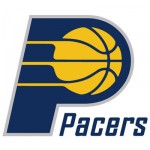The Indiana Pacers were hoping to enter the 2012-13 NBA season with improved depth after shaking up their roster considerably during the summer.
What depth they do have took a hit Tuesday and will be tested early and often.
Pacers forward Danny Granger has been dealing with pain in his left knee and will be out indefinitely, the Associated Press reported Tuesday. That leaves Indiana without its top scorer each of the past five seasons for now, starting with tonight’s season opener at Toronto.
How will the Pacers look to compensate for Granger’s loss, however long it might last?
Conventional wisdom says the Pacers have been dealt a huge blow with this early loss, given that Granger, as mentioned above, has led the team in scoring each season since 2007-08. One could argue, however, that despite missing the points Granger provides night-in and night-out, this setback could benefit Indiana long-term.
Granger has a history of missing extensive time with injury; he has played just one full season in his seven-year NBA career and has missed at least four games each season since 2008-09, the year he won the league’s Most Improved Player award.
Couple Granger’s injury history with the lucrative multiyear contracts given to center Roy Hibbert and point guard George Hill this offseason — and weigh in the impending restricted free agency of promising swingman Paul George — and it’s unlikely Granger, who has served as more or less the face of the Pacers franchise in recent years, has a long-term future in Indiana.
Playing without Granger, therefore, could give Pacers brass an early taste of what its team is to look like in the coming years. The franchise needs to see what it has in Paul George in terms of offensive development, which might be better served if he were to play his natural small forward position that Granger generally occupies (George typically starts at shooting guard).
Additionally, the Pacers clearly are best served utilizing coach Frank Vogel’s inside-out scheme through Hibbert down low. It allowed Indiana to get off to its hot start last season even though Granger evidently struggled to assimilate. The improved overall team success that came with the switch from former coach Jim O’Brien’s up-tempo offense certainly suggests the Pacers still could be competitive after Granger moves on.
While these benefits very well might come of Granger’s absence, the Pacers also are left with plenty of short-term questions as to replacing his production. Here are a few:
- Can Paul George become a scorer? There’s little doubt the Pacers are looking at their 2010 first-round pick as the future of the franchise. George has the athleticism to become a legitimate NBA star. The issue, though, is that his development into a consistent force, both offensively and defensively (but especially the former), has been slow. It’s true George is very young; this presumably would be his first year out of college, so he has plenty of time. But in this, his third professional season, he’ll need to start showing he can score consistently and not insist on deferring when it’s detrimental to do so. His points-per-game averages have increased during his first two seasons from 7.8 points per game to 12.1 in 2011-12. It’s imperative for the Pacers, with or without Granger, that that trend continues this season, because at this point George represents whatever hope Indiana might have at contending for and winning a NBA championship.
- Is Gerald Green a legitimate player or just a dunker? After re-signing Hibbert and Hill, the Pacers had three offseason priorities: backup center, backup point guard and bench scorer. The franchise apparently believed Green could be the latter, signing him to a three-year, $10 million deal. A former champion of the NBA All-Star weekend’s Slam Dunk Contest, Green undoubtedly is a freak athlete, as recently evidenced by his head’s clearing the rim at a practice (from David West’s Twitter account). The question, though, is whether Green can produce to the extent of being a reliable scoring threat off the bench, particularly during the postseason. He has bounced around between five teams and the NBA’s Development League since being drafted in 2005 and only last year broke out as a consistent offensive threat, shooting 48.1 percent and averaging just under 13 points in 31 games for the New Jersey Nets. Was that the real Gerald Green, or a mere aberration en route to a stable environment and contract situation? The Pacers soon will find out, considering they might even have to start Green in Granger’s stead.
- What about good old Lance Stephenson? It’s safe to say the Pacers’ 2010 second-round pick hardly has lived up to his nickname “Born Ready,” appearing primarily in garbage time or extensively in meaningless games. Stephenson, like Green, has plenty of athletic ability, but something just hasn’t been there with his game. The Pacers are hoping that changes in year three, the last guaranteed year of Stephenson’s contract. Moreover, Indiana clearly has established now is the time to see what it has in Stephenson; the Pacers jettisoned Dahntay Jones and made no major personnel move to acquire a new backup shooting guard. The rotation thus appears cleared for Stephenson, who did have a productive game in his only career start against Chicago late last season (10-of-15, 20 points). Problem is, that was a meaningless game in which both the Pacers and the Bulls were locked into their playoff seeds. Can this stat line be the norm for Stephenson, whom former team president Larry Bird has called the Pacers’ most talented player, as a backup shooting guard on a regular basis? If so, it will be great for Indiana. If not, Stephenson will be looking for work rather soon.
